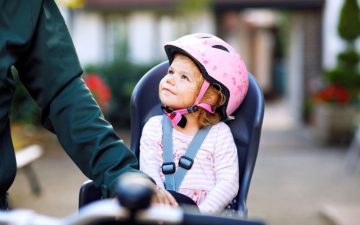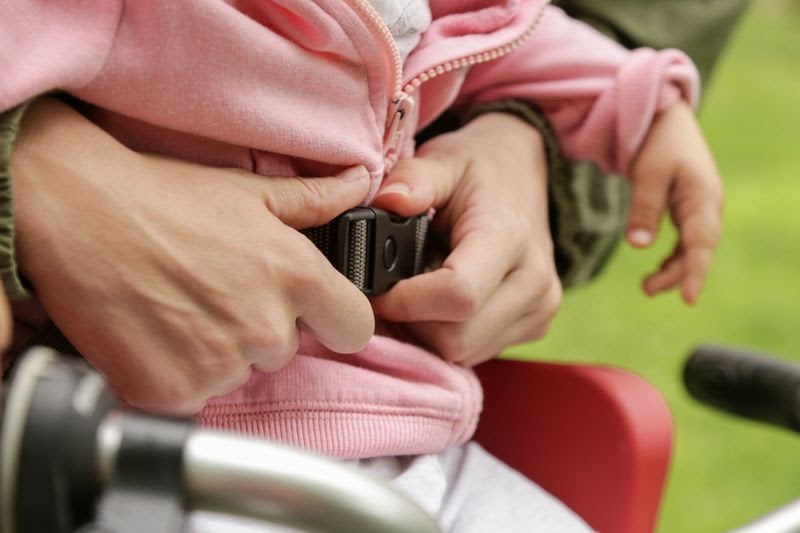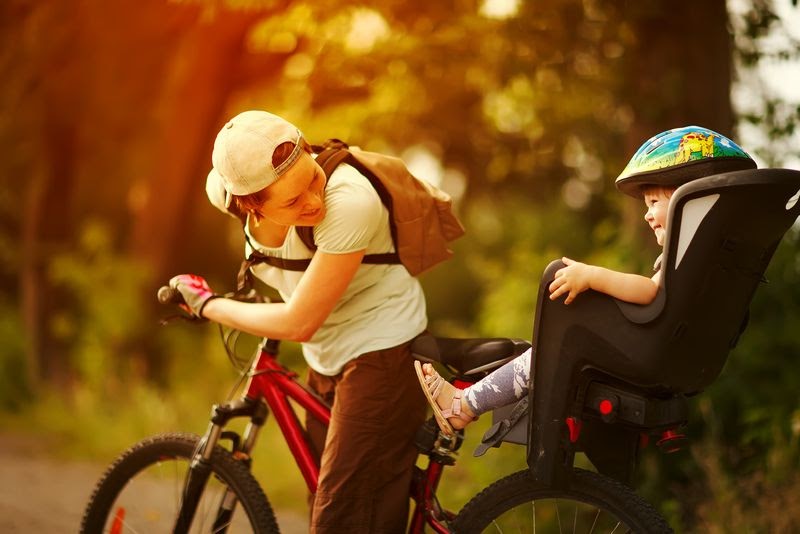
How does the idea of cycling with your baby make you feel? For some, it is exciting, while for others, it appears risky. However, know that you can always make the best of it with proper guidance and equipment.
Biking with a toddler can be one of the most rewarding activities for you and your child. It allows them to explore their surroundings under safe and close supervision. But what do you need to make this time as smooth and enjoyable as possible?
Today’s post will go over some toddler bike seat essentials that will help create a safe and pleasant ride for your baby on board!
6 Biking Factors and Seat Components to Consider For Fun, Safe, and Comfortable Rides With Your Baby
What should you consider when hopping on a bike and bringing your child along? Why is a bike seat an important consideration? How to fit a child’s bike seat? What parts of the seat for toddler bikes do you need to take a closer look into to ensure your child’s safety and convenience? We answer these questions below.
Why Bike Seats Matter
First of all, a child bike seat makes it possible for you to bring your baby along for the ride. It’s the space designed for them, which is why you should pay a lot of attention to it. It can be a hazard if you’re not careful, particularly because of its height and security. The impact of potential accidents will be more severe than that of a bike trailer.
Still, this doesn’t mean you shouldn’t invest in a bike seat. It also offers some advantages; you can see your kid at all times, and they can get a view of the scenery without obstructions. Moreover, you can easily evaluate the weight shifts while riding, which helps keep them safe from ground impact.

Full Body Support: Harness and Shoulder Straps
The first thing you might be concerned about is: what if my child falls asleep during the ride? It may increase the risk of falling accidents. Hence, you need seat components that support the baby’s entire body, no matter the position they’re in.
For full-body support, you need harnesses and shoulder straps. Harnesses come in 3-point and 5-point types, while shoulder straps have pull-down and slide buckle systems. All types have pros and cons, so choosing the right type depends on your equipment. Generally, 5-point harnesses are more secure, and pull-down straps are simpler to use.
Seat Comfort: Bike Seat Shape
Comfort is key when it comes to bike seats for your little one. After all, you’ll be spending quite some time in the saddle together. Therefore, the seat should be soft and contoured to properly fit the child’s body. You don’t want them to feel irritated and start bawling in the middle of your pleasant bike ride.
Seat shape plays a huge role in a bike seat’s comfort. So look for features that promote premium comfort. Helmet pockets, for instance, keep the baby’s head in place and unharmed. Another is a seat bumper, preventing the child’s fingers from getting pushed or squished on poles and walls.
Lower Body Support: Footrests
Having solid full-body support like harnesses and straps isn’t enough. You will also need components for lower body support. Since they’ll be hanging out on the bike for quite some time, they must have a good place to rest their legs and feet.
When it comes to lower body support, footrests will do the trick. Well-designed footrests are sturdy and easily adjustable; they’re especially useful for rear-mounted bike seats, helping to keep the baby’s feet in a convenient position.
Shock Absorption: Suspension
Keeping your child safe from road bumps and ground impact is very important. Whether you’re going over a speed hump, riding down a hill at a faster speed, or dealing with a curb, the baby should always feel comfortable and safe. Otherwise, it can cause major problems, from falling to body injuries.
For road shock absorption, suspensions are necessary. Suspension systems are usually only available on rear-mounted bike seats, flexing from 1‒3 inches to brace and absorb ground impact.

Riding Experience: Front vs. Rear-Mounted Seats
When riding a bike with your little one, consider the experience. You want it to be an enjoyable bonding moment, but you also want to ensure the child’s safety at all costs. This means having an easy and clear view when supervising the child from your position.
So which component of a child’s bike seat for your baby should you look into? It’s choosing between front or rear-mounted seats. Here’s an overview of the pros and cons of these seat placements.
| Bike Component | Pros | Cons |
| Front Mount Seat |
|
|
| Rear Mount Seat |
|
|
Give Your Little One a Memorable Biking Experience
Even on flat and less complicated roads, cycling with a passenger is not that simple. Moreover, if you’re having a baby on board, you need to be extra careful with your preparation.
Aside from choosing a well-designed bike, you also need to ensure that the baby bike seat for the child is safe and comfortable. Everything will go smoothly as long as you look into the child seat parts that significantly contribute to the riding experience.
Not Ready for a Standard Bike? Start With AshtonBee’s Balance Bike for Toddlers
If you’re not yet ready to bring your toddler along on a full-sized bike, start with AshtonBee’s Balance Bike. Helping your kid develop their balance can help them get used to bikes slowly but surely.
Our starter balance bike is suitable for kids up to 24 months old. It doesn’t have any pedals, has a 135-degree steer limit, and has durable non-slip wheels for basic and safe riding. You can also choose from three lovely colors with fun names: orange (Baby Biker), blue (Little Rider), and pink (Princess Wheels). Here’s to safe cycling and good memories!



